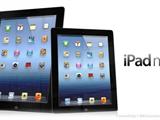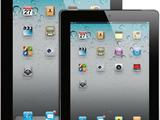Apple Should Apply Low-Cost iPhone Strategy to iPad
The iPad, which once led the market by a wide margin, was quickly caught up by Android tablets within just one year. Then, in another year, the iPad had already fallen far behind Android tablets.
According to the latest tablet research report from market research company IDC, the iPad's sales in the second quarter were only 14.6 million units, down from 19.5 million units in the previous quarter and 17 million units in the same period last year. This is the first time since the launch of the iPad in 2010 that sales have declined both year-on-year and quarter-on-quarter. This can't help but make people worry about the fate of the iPad - will it end up like the iPhone, guiding the direction of the market but ultimately being overtaken?
The decline of the iPad is reflected in its market share. In Q2 2012, the iPad's share was 60.3%, while Android's was 38%. By Q2 2013, the iPad dropped to 32.5%, while Android rose to 62.6%, almost reversing their positions.
The reasons for the decline in the iPad's share are similar to those for the iPhone. Despite the fact that the iPad is widely regarded as the best tablet, with only two new products released each year, it cannot compete with the "army" of Android devices. In an era where consumers seek personalized products, one or two products simply cannot satisfy the mass market.
Samsung, ranked second in the market, releases a large number of new tablet models every year, covering every细分 size from 7 inches to 10.1 inches, with prices ranging from high to low. Amazon launched two tablets last year, with the lowest price at just $199. There's also the highly popular Nexus 7, not to mention the large number of low-priced, highly personalized white-label tablets in the Chinese market. These Android tablets not only offer ample differentiation but also have a significant price advantage over the iPad.
In IDC's statistics for this year and last year's Q2 (as shown in the figure above), the market sales of Others, excluding the top five manufacturers, increased from 7.4 million units last year to 17.5 million units. This includes Windows tablets, Amazon tablets, and white-label tablets. Since the sales changes of the former two are not significant, much of this growth can be attributed to white-label tablets.
When product features do not create a significant difference, price becomes the dominant factor, putting enormous pressure on products like the iPad that achieve high quality through high pricing. After monopolizing the tablet market for 2.5 years, Android tablets finally won the market using their strengths in a sea of products, differentiation, and low prices, satisfying a large number of people who desire tablet devices.
The current situation of the iPad is similar to that of the iPhone. The iPhone's market share in the second quarter was 13.6%, compared to 16.6% in the same period last year and 18.8% the year before, showing a yearly decline. Functionally speaking, those Android phones priced around a thousand yuan are not inferior to the iPhone; what they lack is brand and user experience, but consumers clearly care more about price.
Apple's low-cost iPhone is intended to bridge this gap. Currently, the lowest price for the iPhone 5 is $649 (all subsequent figures refer to the lowest configuration price), the iPhone 4S is $549, and the iPhone 4 is $450. The low-cost iPhone is likely to be priced below $450, while still higher than the iPad mini's $329, roughly equivalent to two-thirds of the original iPhone price.
In contrast, the iPad's pricing is too concentrated. The iPad is priced at $499, the iPad 2 at $399, and the iPad mini at $329, with a price difference of only $170 between the highest and lowest, which is not a very noticeable gap. Moreover, compared to competitors, the cheapest iPad ($329) is $130 more expensive than the Amazon Kindle Fire HD and Asus Nexus 7, approximately 800 RMB more.
Meanwhile, Lenovo, a brand with substantial shipments, has launched several tablets priced around a thousand yuan. Although Samsung's tablet prices are still above 2500 RMB, they provide a wide range of differentiated options. In Zhongguancun's electronics market, white-label Android tablets priced at 500 RMB are ubiquitous. To some extent, these products are more suitable for consumers, such as the ability to connect external USB drives and expand storage.
To attract more users, given that there cannot be significant changes in product functionality and form in the short term, price remains the key to opening up the market. Apple should apply the strategy of the low-cost iPhone to the iPad, such as launching a plastic-bodied, $199 iPad mini, which would significantly broaden the market prospects.
Moreover, given the current market changes, with the proliferation of internet services and personal data, the value of the software market will far exceed that of the hardware market. Therefore, sacrificing hardware profits to gain a sufficient number of users and building a robust software service ecosystem is the future trend. Besides, when the iPad was first launched, the $499 price was considered extremely low at the time, successfully eliminating competitors and shaping the tablet market. Now, Apple might consider going even further.
Image source: Applesfera



